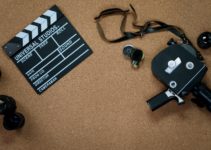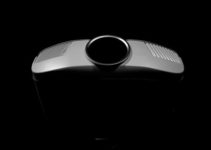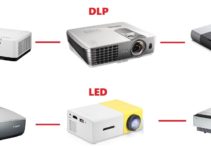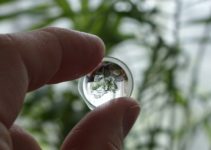Have you ever encountered a movie screen where the glare of blue, green, and red shadows appears on the screen? This is called dlp rainbow effect. So what is dlp rainbow effect? What is the cause of that phenomenon and how to fix this phenomenon? Read our article below for the most detailed answers!
What is the rainbow effect on dlp projectors?

The rainbow effect on dlp projectors is also known as color disruption, the rainbow effect is considered to be the short traces of successive rays of light. This color disturbance occurs, especially when a bright object appears against a darker background in the projected image.
DLP technology
What are DLP technology projectors?
What a DLP projector is, essentially, is not too confusing. In essence, this is a technology that processes digital light through small mirrors to either reflect light towards the screen or away from the screen.
Besides finding out what LCD projectors are, you also need to understand the concept of LCD projectors. In which LCD stands for Liquid Crystal Display cluster. This is a very familiar technology that is commonly known in the majority of recent TV models. LCD projectors apply up to 3 frames of liquid crystal display, each with an image-making task. In which technology only uses 3 colors, mainly green, red, and blue.
Previously, projectors synthesized images from 3 primary colors red, green, and blue. The original white light source was split into 3 monochromatic red, green, and blue sources and resulted in three independent LCD panels. If the projection point on the LCD projector is in the closed state and the light does not penetrate, the corresponding pixel on the screen is black. Likewise, the pixel brightness changes proportionally when left open.
DLP light display technology was developed by Texas Instruments. The technology uses a DMD digital mirror device chip with each chip attached to thousands of micro-mirrors. But each micro-mirror represents an individual pixel. These mirrors tilt forward and back at an extremely fast rate, reflecting the light emitted by the source to create an image on the projection screen.
It can be said that DLP is a projector technology that is considered to be almost the latest today. Most DLP projector models use a 3 or more color filter wheel to create the finished color. Single-chip DLP projectors mostly limit the brightness of 3000 lumens while the 3-chip LCD and DLP have 6000 lumens.
In particular, the advantage of DLP projectors also comes from being compact, easy to move because of fewer components. The colors, images displayed are very vivid. Transitions in movies are smooth and smooth. The technology can also reduce the square grid effect to create the feeling of a complete movie.
How does DLP technology work?
In a projector with a solitary DLP chip, colors are delivered by putting a shading wheel between white light and a DLP chip or utilizing singular light sources to create essential tones. Driven or lasers.
The shading wheel is isolated into a few sections: the principal added substance tones: primarily green, red, and blue, and much of the time white (clear). The fresher frameworks will supplant prevailing short tones dark, red, and yellow for white.
The utilization of subtractable tones is essential for a more current shading execution framework considered Brilliant Color that treats in addition to colors along with subtractive tones to make a more extensive shading blend on the screen.
Advantages of DLP technology
The advantage of DLP is that it produces smooth, high-contrast images and does not have the same focus distortion as the 3-plate LCD technology. And DLP projectors have a simpler structure than 3-plate LCD, so the size is relatively small and lighter. By adding white to the color wheel, images produced by DLP projectors are brighter.
However, this in turn causes the balance ratio between the different colors and reduces the color hue display. Eliminating white and using a multi-color dial enables DLP projectors to exhibit brighter, richer colors, but reduced brightness.
Weakness of DLP technology
Low color saturation will affect a lot when the video presentation will appear a “rainbow” effect as a rainbow-like light trail that flashes when viewed from side to edge of the screen or when viewed from the image. The photo shines to look at objects outside.
The “halo” effect (or exposure) can be uncomfortable when using the projector to watch movies at home. It’s a gray band around the edges of the image, caused by “stray” light being bounced off the edges of the tiny mirrors on the DLP chip. Can be overcome by creating a black border a few inches wide around the screen, the “halo” will fall on this border.
Causes of rainbow artifacts
The rainbow effect is conceivable on a wide scope of single-chip DLP projectors. This marvel happens because the eye can’t recognize, permitting us to see every one of the tones delivered as a picture. On minimal effort and older style DLP projectors, this shading creation is dealt with by a shading wheel.
The DLP rainbow impact is frequently observable on pictures of old and modest projectors that have moderate turning shading wheels. The rainbow impact typically happens in projectors with a 3 shading wheel (red, blue, and green), particularly when a splendid article (white) shows up in the film. The white pieces of the screen are made by blazing each of the three shading parts simultaneously, making rainbow twisting observable.
The DLP rainbow effect can affect whom?
The Rainbow effect influences just a little part of projector watchers. In any case, for a few, it tends to be especially inconvenient.
Luckily, a ton of watchers didn’t encounter the impact by any means. Notwithstanding, regardless of whether this is the situation, it’s essential to take note of that the impact will be observable by the level of your associates and family.
Conclusion
The Dlp rainbow effect may be annoying to the user. However, only certain angles when you view the projector will be visible. So you also don’t need to worry too much about it unless it gets severe: the light trail is more or more wide. Thank you for reading our article!






